John Alfred Rivington patented a naval/land battle tiddlywinks game in 1899 in the UK. According to the patent:
This invention relates to a game which is intended to represent a naval or land battle. The game according to this invention is played upon a board divided into squares, upon which are moved a series of pieces which represent ships in thc case of the game imitating a naval battle, but where a land battle is simulated the pieces represent, either individuals, companies of men, regiments, guns or the like. The game consists in controlling, checking or counter-acting the moves of the 'opposing player by the projection of counters or the like into or on to the pieces, which are preferably formed as cups or trays so as to retain the counters lodged in them. [...] The board A (Figure 1) is divided into one hundred and forty-four squares, each square being numbered. The players preferably sit at the sides of the board marked A1 and A2 so that the numbers may be read with equal facility by each player. In Figure 2 B is one of the pieces diagrammatically representing a ship, C is a pad or felt or similar material upon which a counter D is placed, before it is fired by means of a " flicker " E. The " flicker " E, which is in the form of a flat strip of bone or similar material, is used as shown in Figure 3, being drawn sharply along the top and off the edge. of the counter D. The use of the pad C is not essential, for the counter D may be placed directly upon the board or within the piece, it is however preferred to employ the pad as it renders the firing of the counter more easy.
UK patent # • GB189910760A
Application with Provisional Specification submitted • 23 May 1899
Complete Specification provided • 31 July 1899
Accepted • 9 September 1899
![[+template:(Tucker Tw ID • [+xmp:title+] — publisher • [+iptc:source+] — title • [+xmp:headline])+]](https://tiddlywinks.org/wp-content/uploads/2022/12/1899-09-09-patent-GB189910760A-by-John-Alfred-Rivington-re-naval-battle-drawings-731x1024.jpg)
Application with Provisional Specification submitted • 23 May 1899
Complete Specification provided • 31 July 1899
Accepted • 9 September 1899
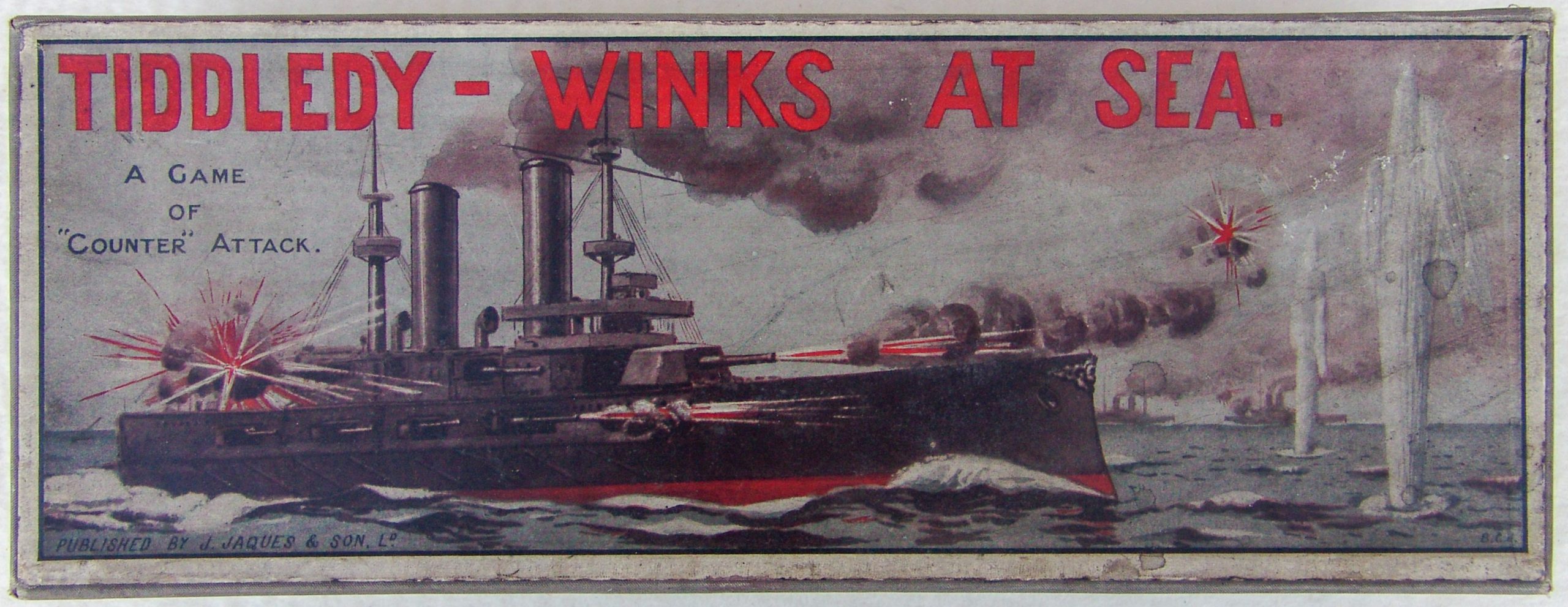
title • Tiddledy-Winks at Sea
publisher • J. Jaques & Son Ltd.
date • 1913
item • cover
photograph by • Rick Tucker
original in • Tucker Tiddlywinks Collection
licenseable • per Creative Commons CC BY-SA 4.0
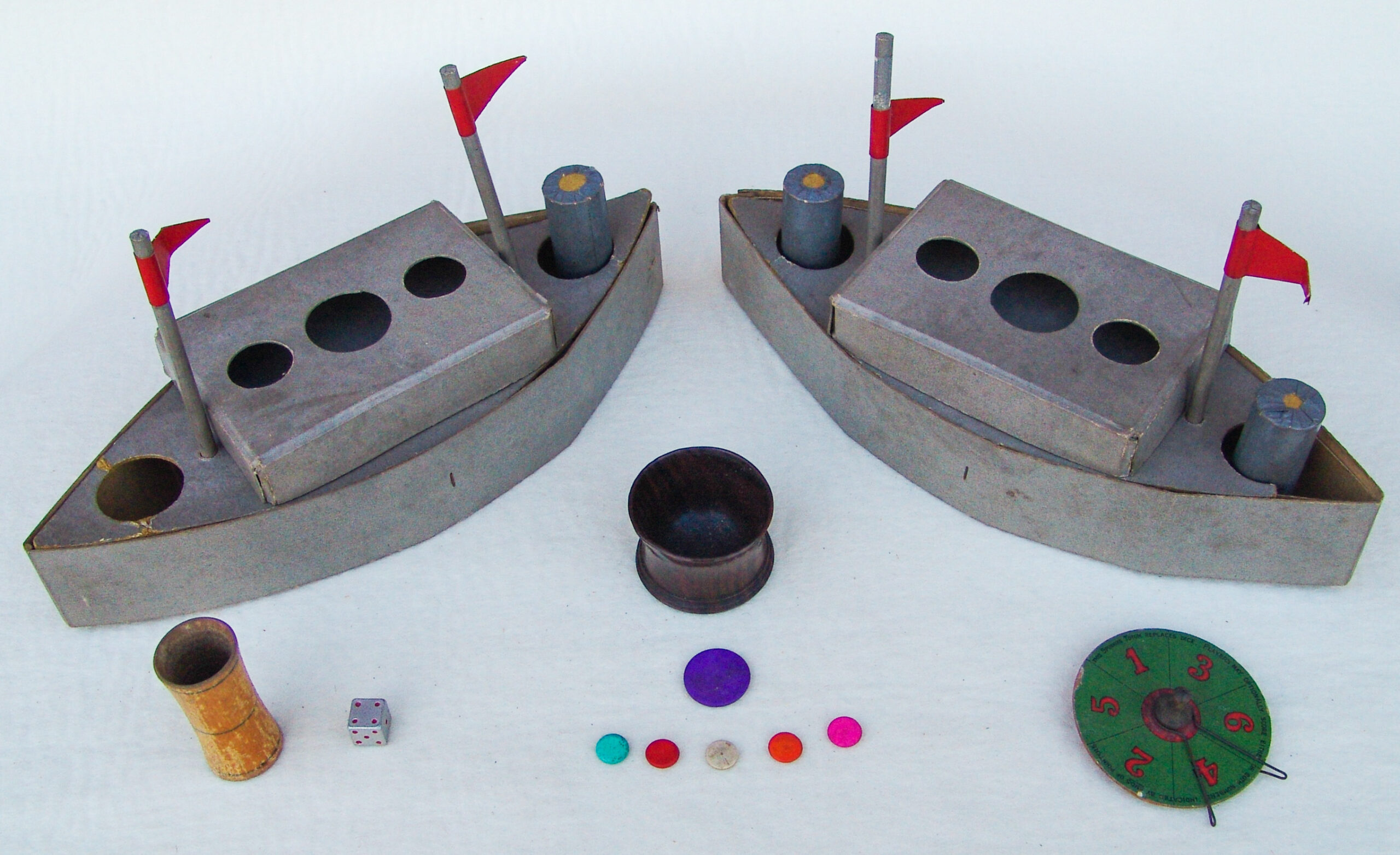
title • Tiddledy-Winks at Sea
publisher • J. Jaques & Son Ltd.
date • 1913
item • contents
photograph by • Rick Tucker
original in • Tucker Tiddlywinks Collection
licenseable • per Creative Commons CC BY-SA 4.0
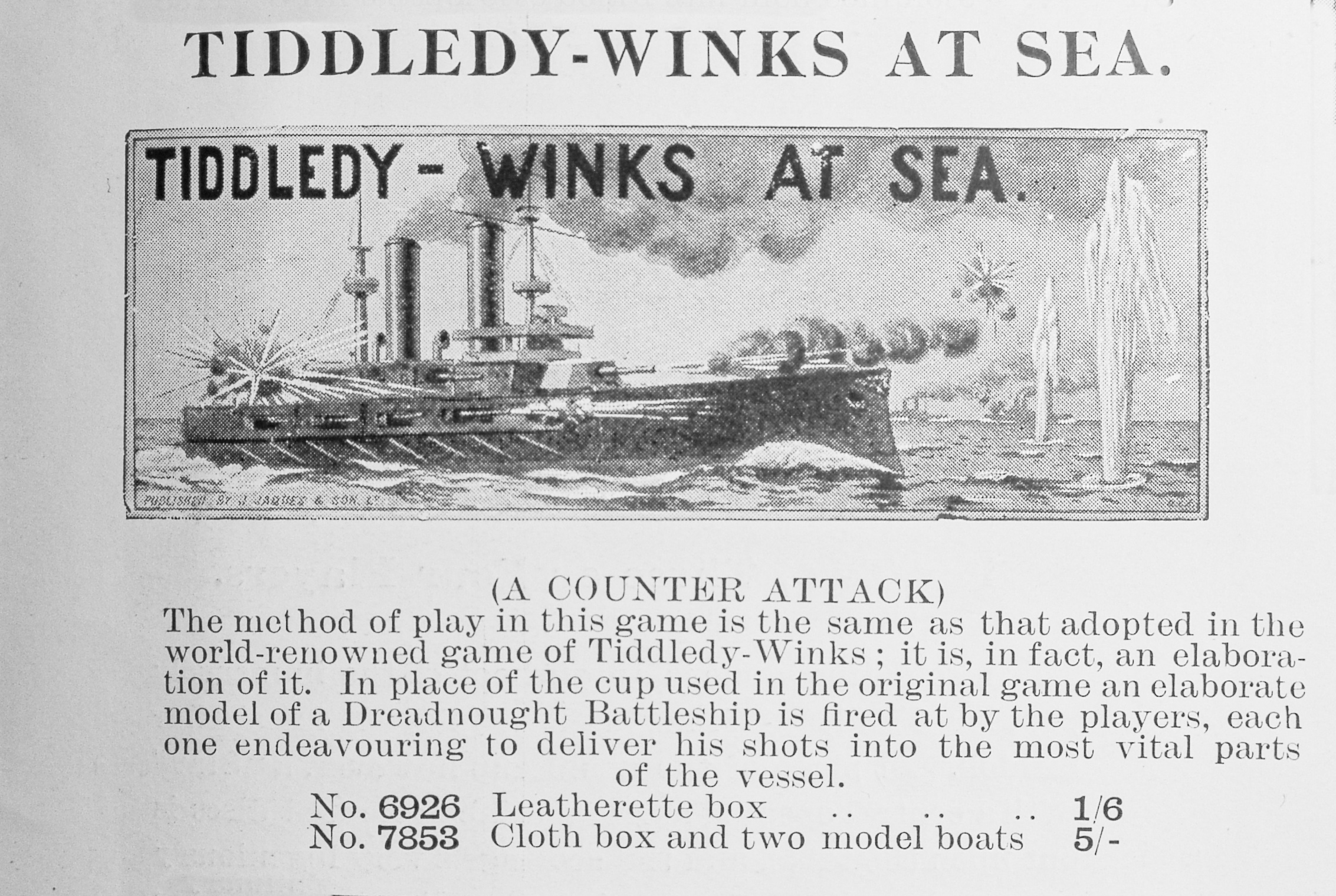
title • TIDDLEDY WINKS AT SEA
publisher • J. Jaques & Son Ltd.
date • 1913
item • catalog entry
photograph by • Rick Tucker
original in • Richard Ballam Collection
licenseable • per Creative Commons CC BY-SA 4.0
John A. Walls patented a naval war game in the U.S. in 1917 (# 1,213,562). Games based on this patent have not yet been located.
Ernest Sewell, who earlier produced TiddlyTennis and quite a variety of other innovative tiddlywinks games, came out with a game based on the Siegfried Line, noted on the game cover to be “The Game of the moment”. The Siegfried line was a defensive military front line established in Germany starting in 1936 in advance of World War II and greatly expanded in 1944 during that war.
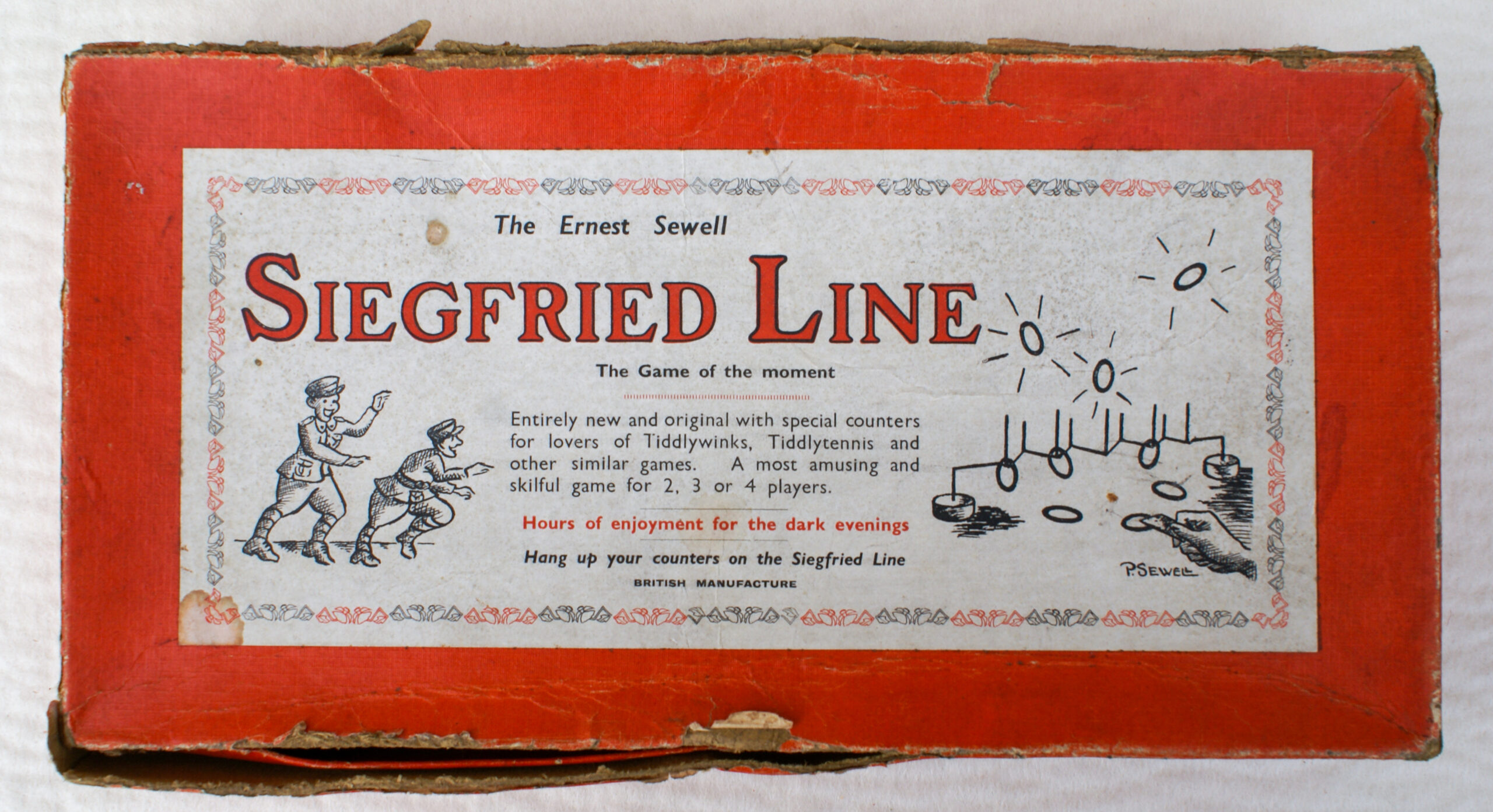
title • The Ernest Sewell Siegfried Line
publisher • Ernest Sewell
date • 1936 or in a close year thereafter
item • cover
photograph by • Rick Tucker
original in • Tucker Tiddlywinks Collection
Licenseable per Creative Commons CC BY-SA 4.0
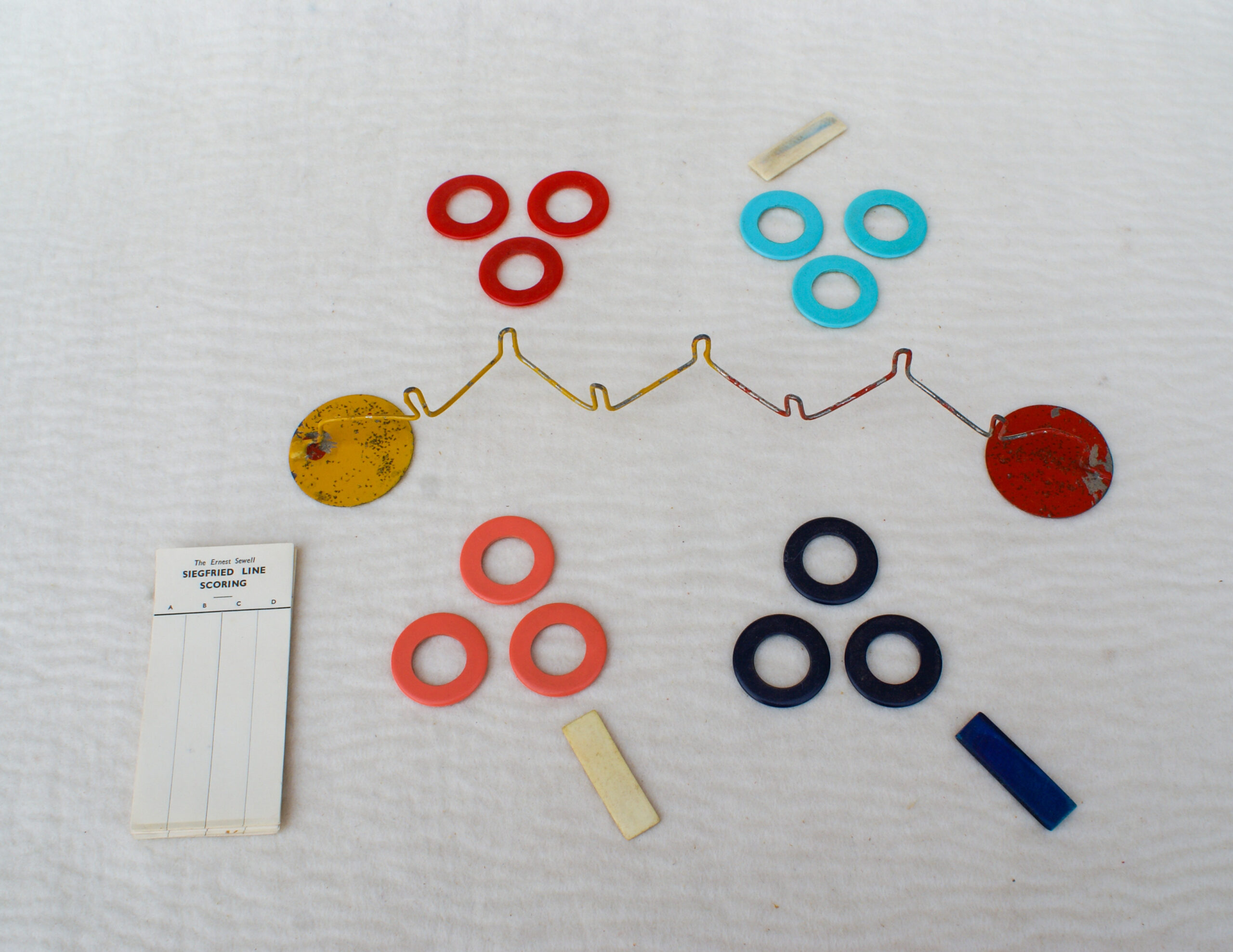
title • The Ernest Sewell Siegfried Line
publisher • Ernest Sewell
date • 1936 or in a close year thereafter
item • contents
photograph by • Rick Tucker
original in • Tucker Tiddlywinks Collection
Licenseable per Creative Commons CC BY-SA 4.0
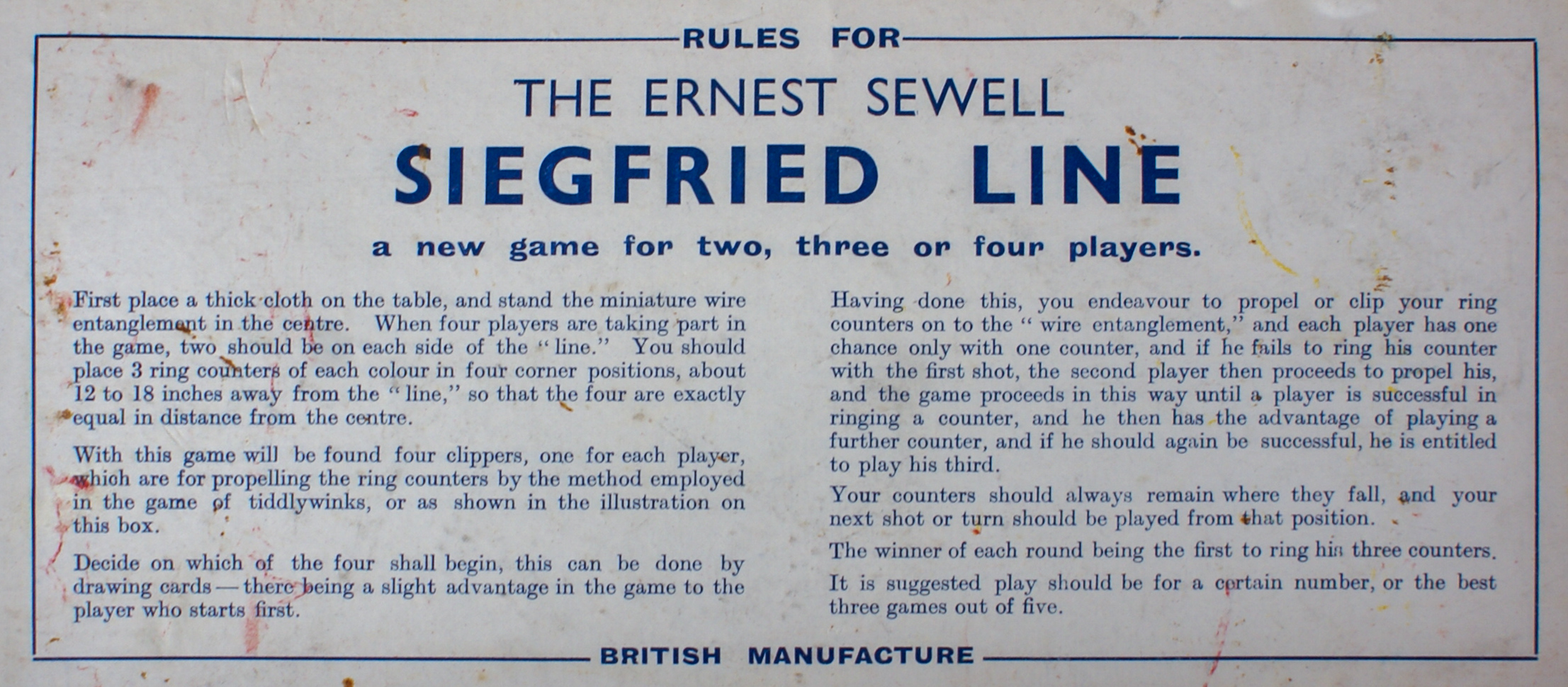
title • The Ernest Sewell Siegfried Line
publisher • Ernest Sewell
date • 1936 or in a close year thereafter
item • rules
photograph by • Rick Tucker
original in • Tucker Tiddlywinks Collection
Licenseable per Creative Commons CC BY-SA 4.0
The H. P. Gibson Company, via its International Series brand, introduced the Sea Winks game, which involved competitions between blue and red navies on a notional map playing surface.

title • SEA WINKS
publisher • International Series (by H. P. Gibson & Sons, Ltd.)
date • ~ 1930
item • cover
photograph by • Rick Tucker
original in • Tucker Tiddlywinks Collection
Licenseable per Creative Commons CC BY-SA 4.0
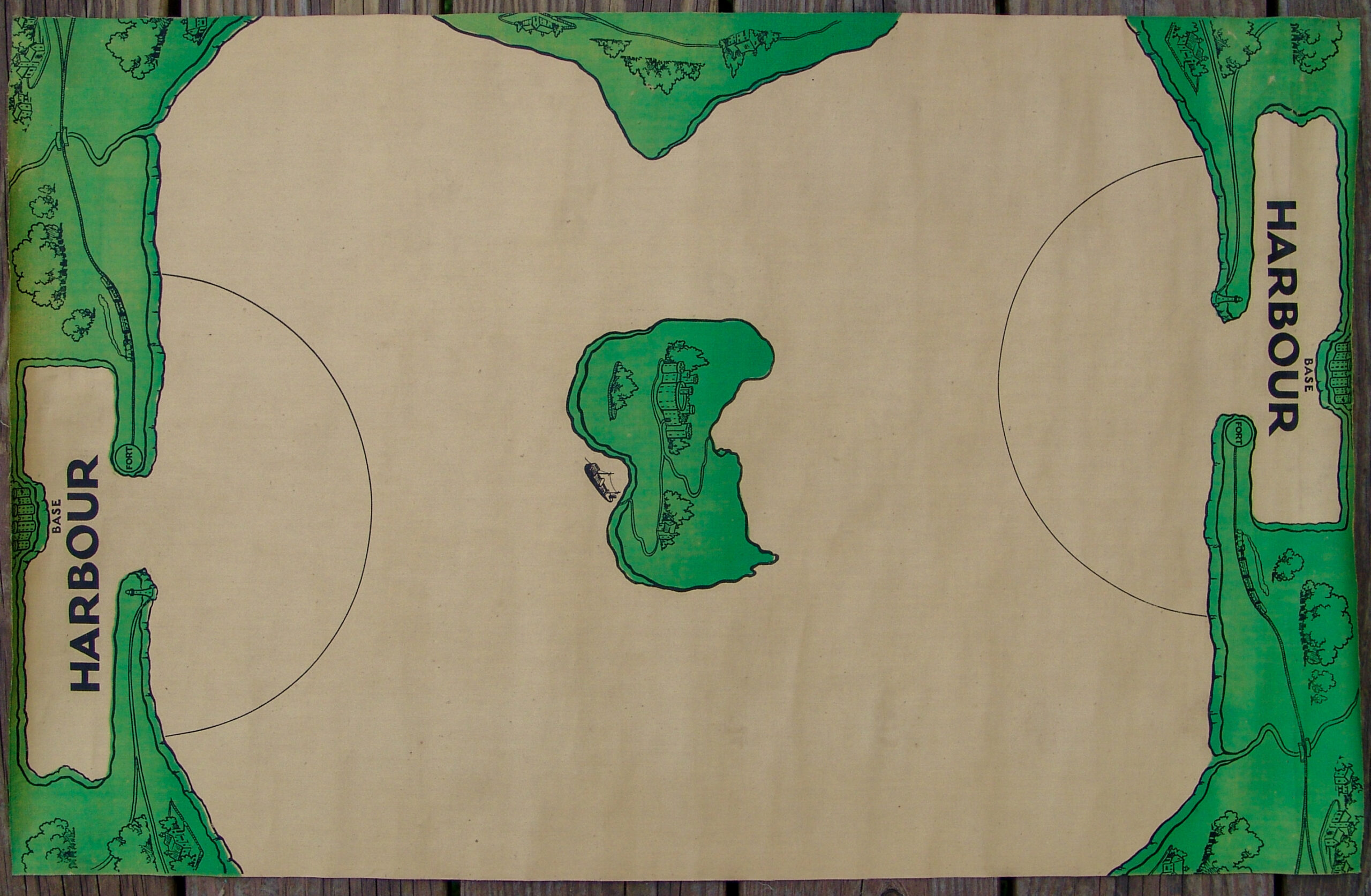
title • SEA WINKS
publisher • International Series (by H. P. Gibson & Sons, Ltd.)
date • ~ 1930
item • playing surface
photograph by • Rick Tucker
original in • Tucker Tiddlywinks Collection
Licenseable per Creative Commons CC BY-SA 4.0
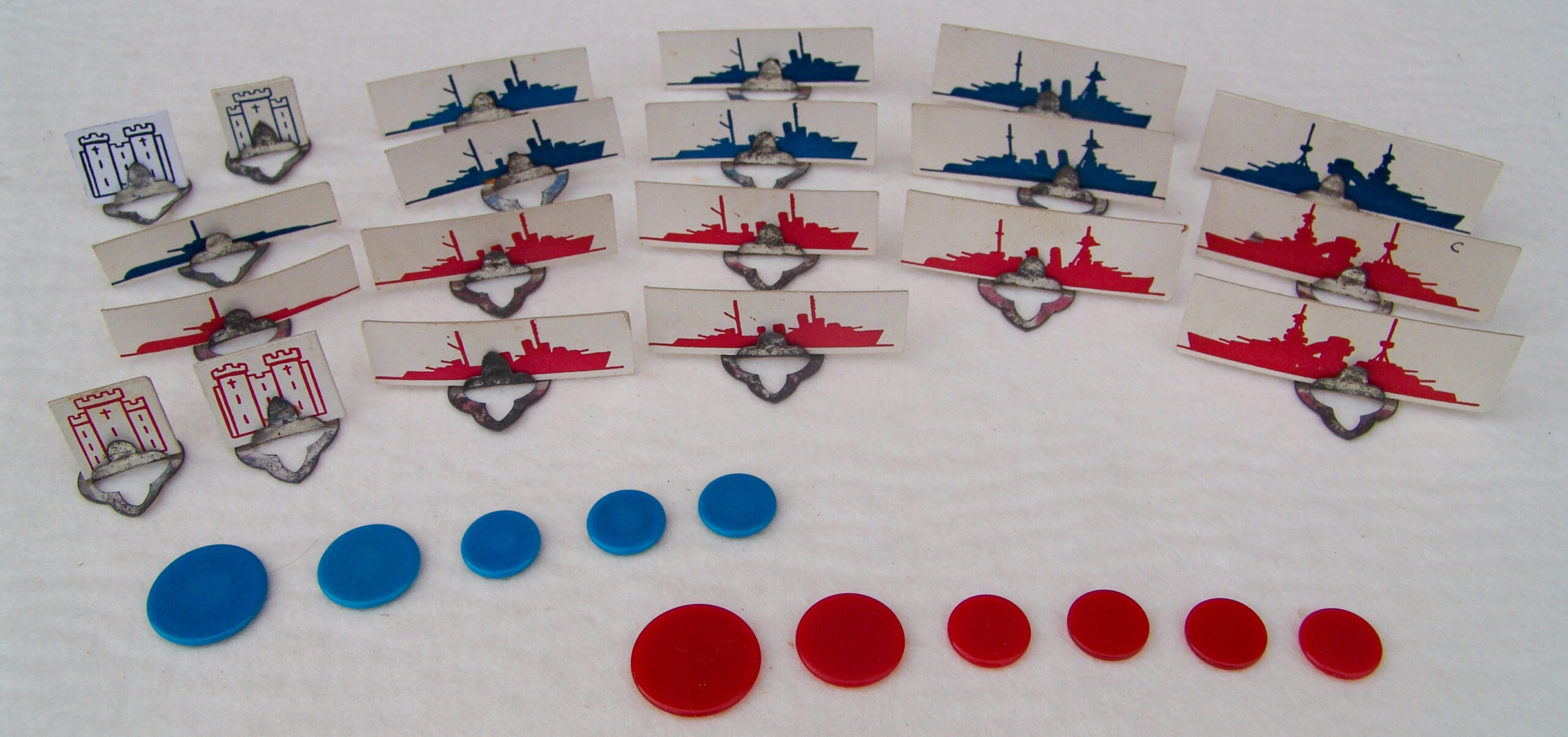
title • SEA WINKS
publisher • International Series (by H. P. Gibson & Sons, Ltd.)
date • ~ 1930
item • game targets and winks
photograph by • Rick Tucker
original in • Tucker Tiddlywinks Collection
Licenseable per Creative Commons CC BY-SA 4.0
British Games Ltd. (B. G. L.) produced Battling Bombers in the early years of World War II. The bomber aircraft depicted on the cover are the Bristol Blenheim and the Vickers Wellington.
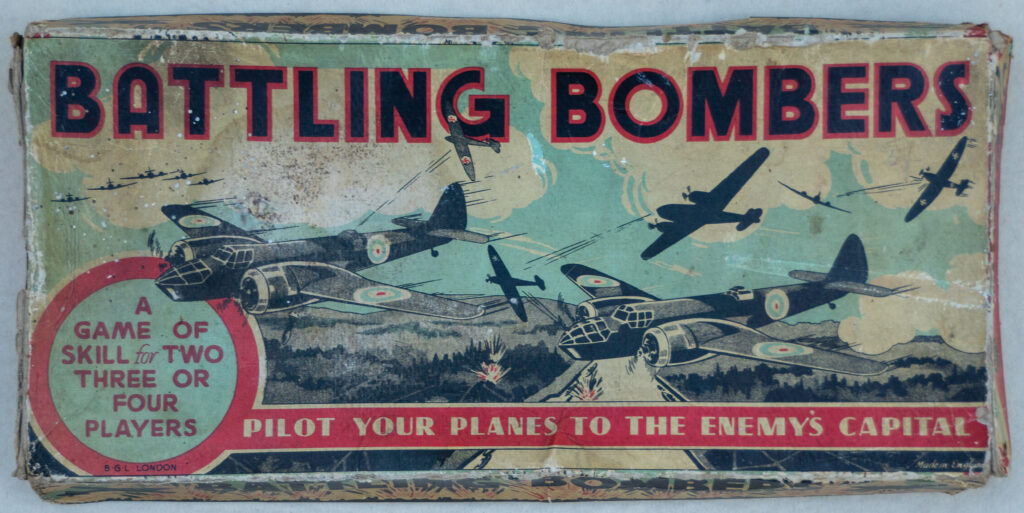
title • BATTLING BOMBERS
publisher • British Games Ltd. (B.G.L.)
date • early 1940s
item • cover
photograph by • Rick Tucker
original in • Tucker Tiddlywinks Collection
Licenseable per Creative Commons CC BY-SA 4.0
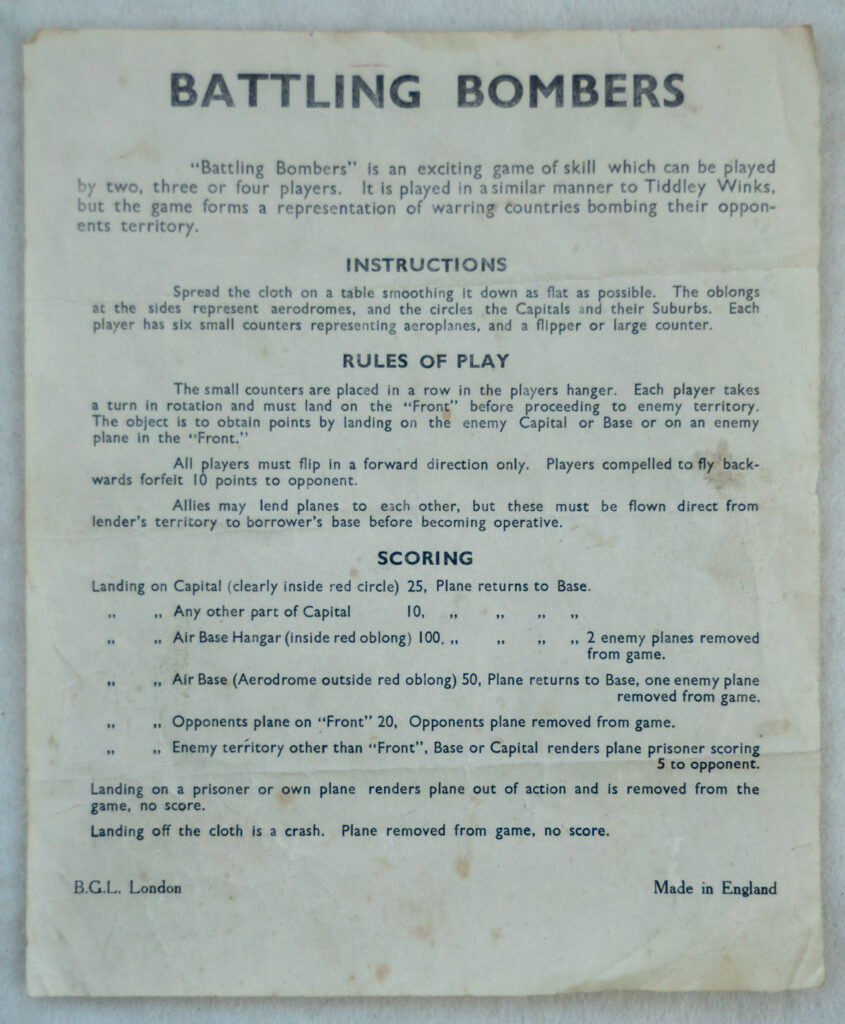
title • BATTLING BOMBERS
publisher • British Games Ltd. (B.G.L.)
date • early 1940s
item • rules
photograph by • Rick Tucker
original in • Tucker Tiddlywinks Collection
Licenseable per Creative Commons CC BY-SA 4.0
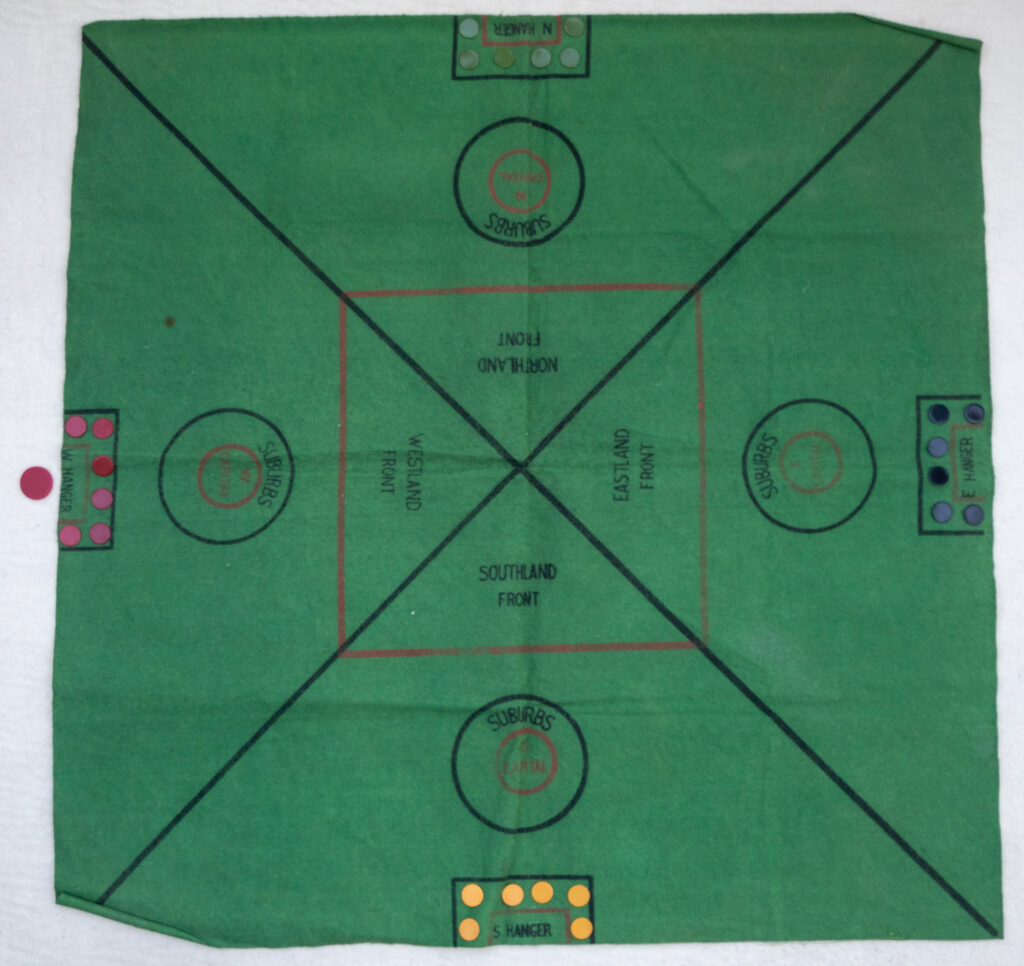
title • BATTLING BOMBERS
publisher • British Games Ltd. (B.G.L.)
date • early 1940s
item • felt playing surface with winks and squidgers laid out
photograph by • Rick Tucker
original in • Tucker Tiddlywinks Collection
Licenseable per Creative Commons CC BY-SA 4.0
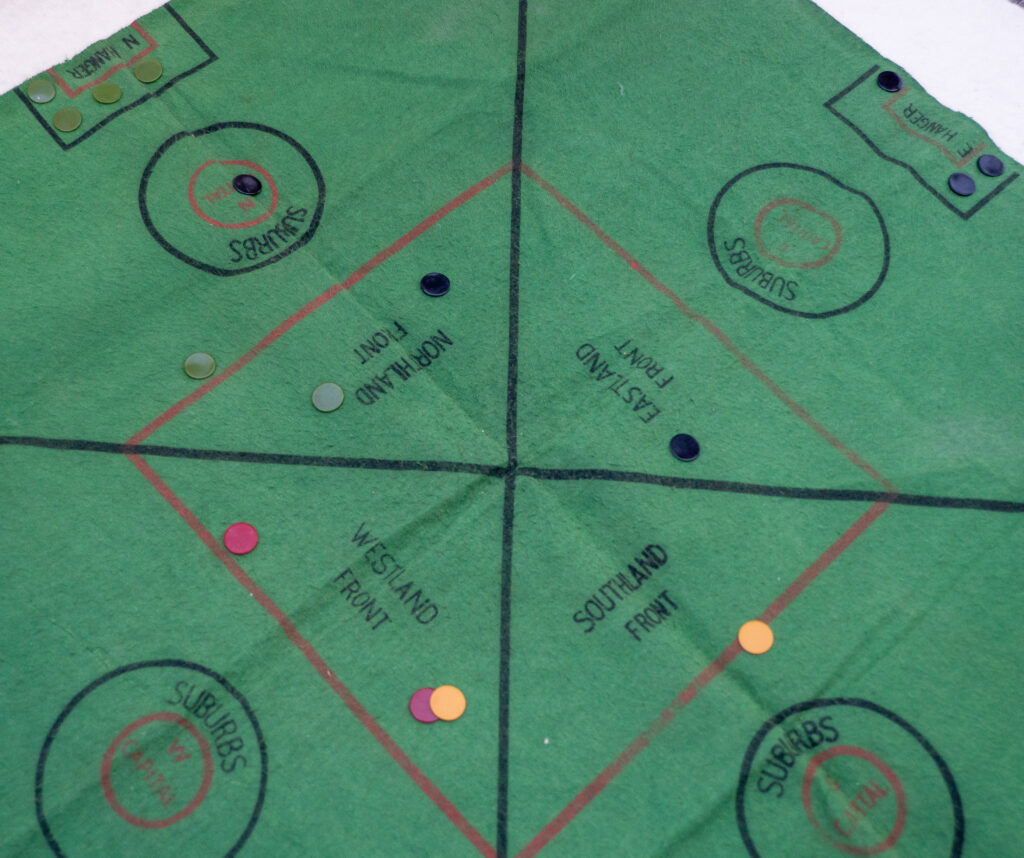
title • BATTLING BOMBERS
publisher • British Games Ltd. (B.G.L.)
date • early 1940s
item • felt playing surface with winks landed in target areas
photograph by • Rick Tucker
original in • Tucker Tiddlywinks Collection
Licenseable per Creative Commons CC BY-SA 4.0
Corey Games (East Boston, Massachusetts) produced Tiddly Winks BARRAGE GAME (© 1941) where, according to the rules:
Players place the winks, one at a time on the BATTERY EMPLACEMENT. Each team now shoots his winks as fast as possible (without waiting for turns), in an endeavor to land the winks in the opponent’s seaport, munitions dump, air field, or capitol. […] any player who lands one wink in his opponent’s capitol wins immediately.

Rick Tucker Tiddlywinks Collection
Licenseable per Creative Commons CC BY-SA 4.0
Bruce Whitehill has loaned me a boxless set (of perhaps pre-1920 vintage) consisting of a yellow-orangeish felt mat with marked stations for wooden battleships. Each battleship has three metal spires onto which rings are to be shot.
Battle Winks (© 1943) was produced by Milton Bradley during World War II. Its cover and game board depict ships at sea during World War II.
The book, Cavalcade of Toys, by R. & L. Freeman, 1942, page 366, incorrectly states that the game of Battle Winks was produced in 1903. 1943 is the correct date.
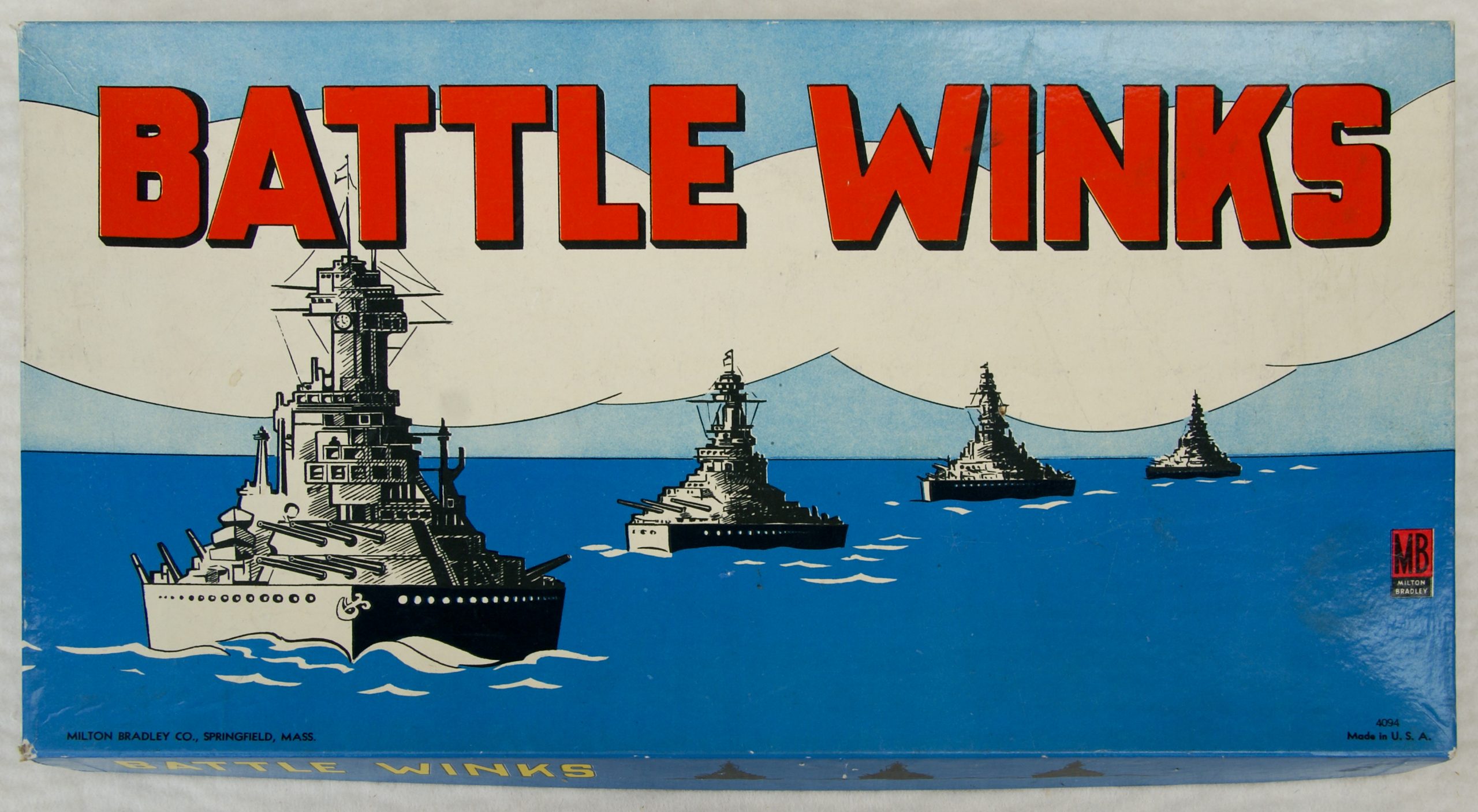
Rick Tucker Tiddlywinks Collection
Licenseable per Creative Commons CC BY-SA 4.0
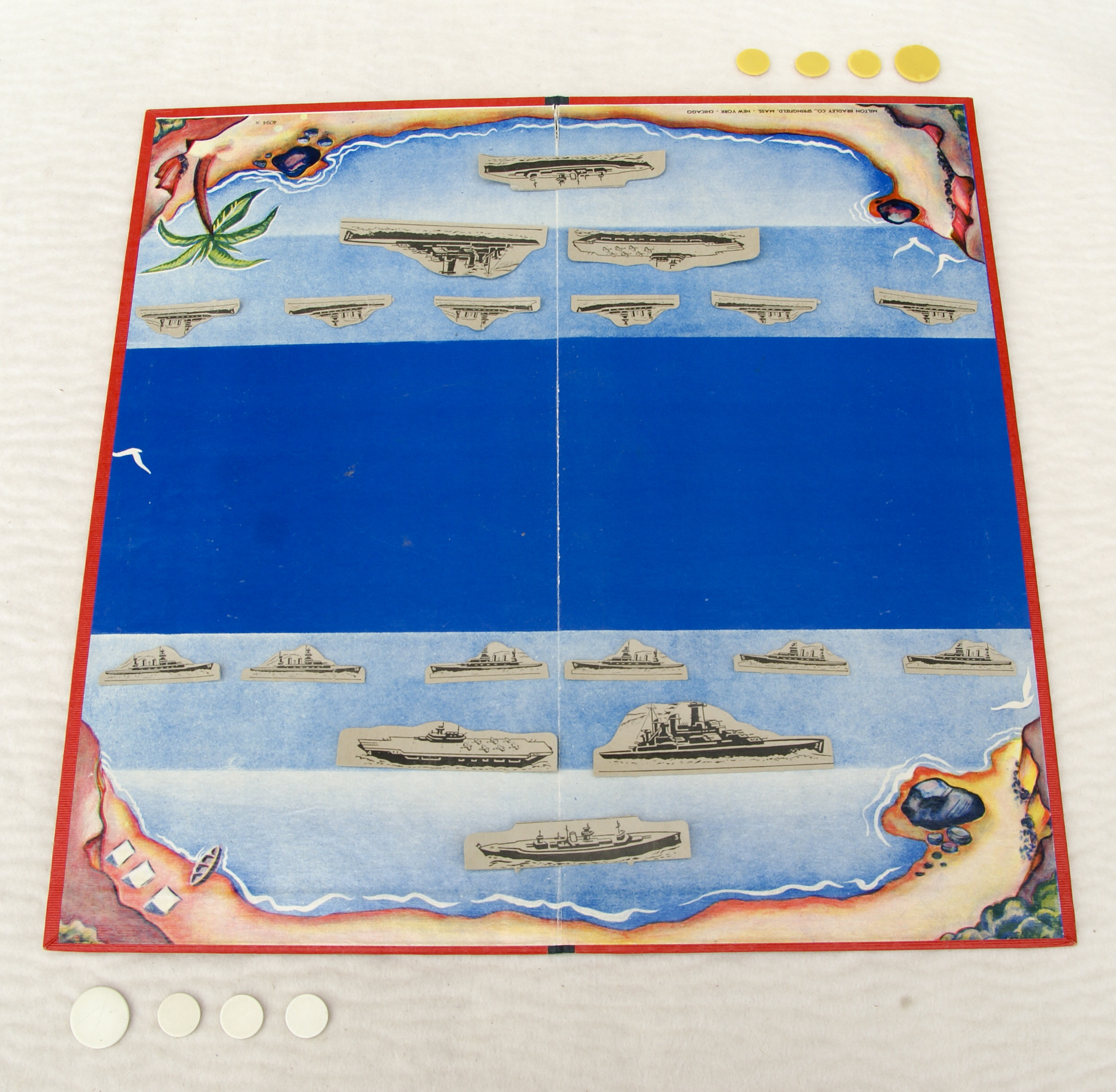
Rick Tucker Tiddlywinks Collection
Licenseable per Creative Commons CC BY-SA 4.0
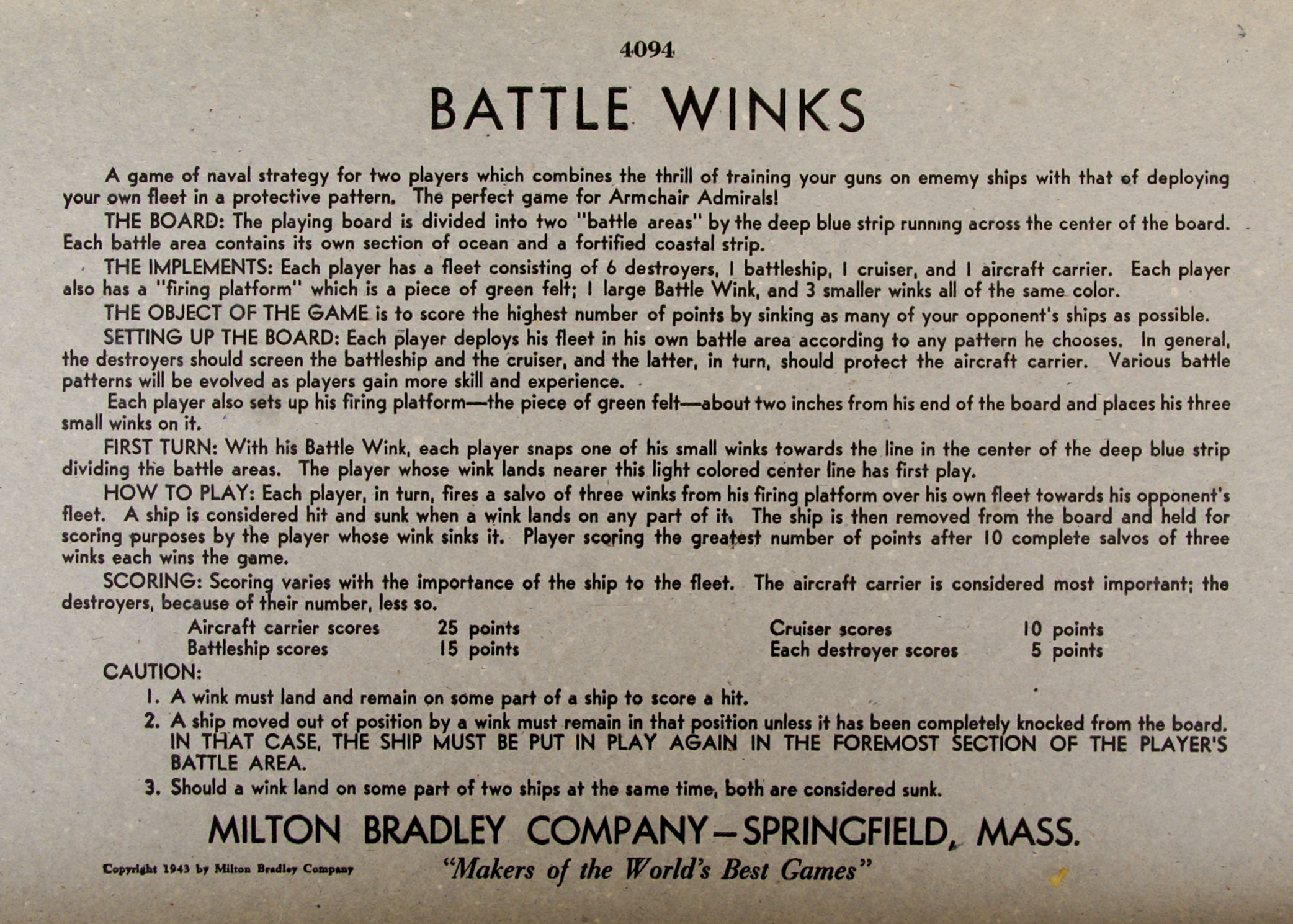
Rick Tucker Tiddlywinks Collection
Licenseable per Creative Commons CC BY-SA 4.0
Robert Colin Harvey Webb patented a war simulation game in 1967 in the UK.
Navigating Chapters
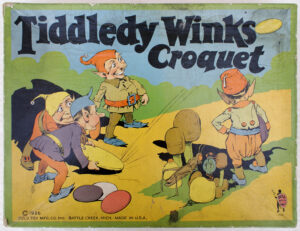
10 ❖ Tiddlywinks • A Barrage of Sports Simulations
A slew of sports succumbed to tiddlywinks frenzy, starting soon after 1890, with many continuing on to this very day. These most brisk and giddy-paced
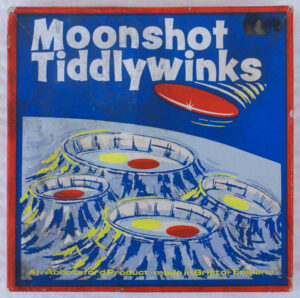
12 ❖ Tiddlywinks • Launching Into Space
The game ROCKET TO THE MOON, sporting Walt Disney characters, was published by Bell Toys & Games of London, England under a 1959 copyright by Walt